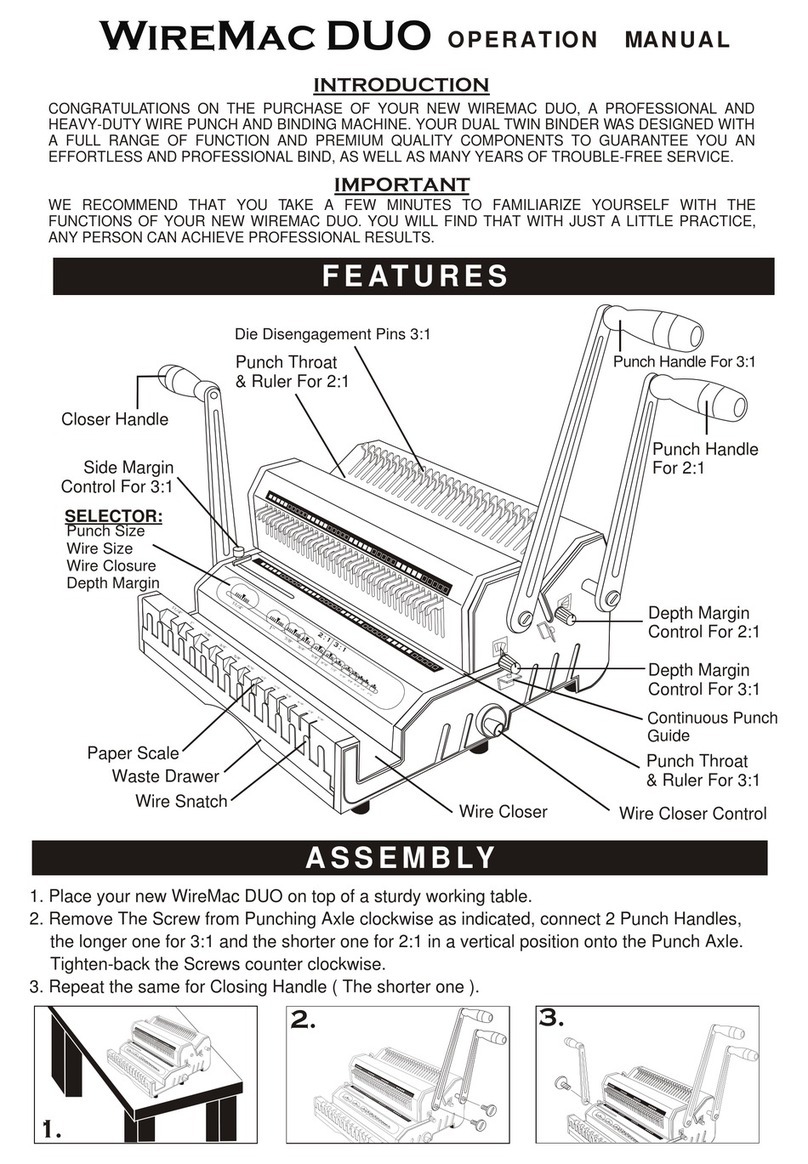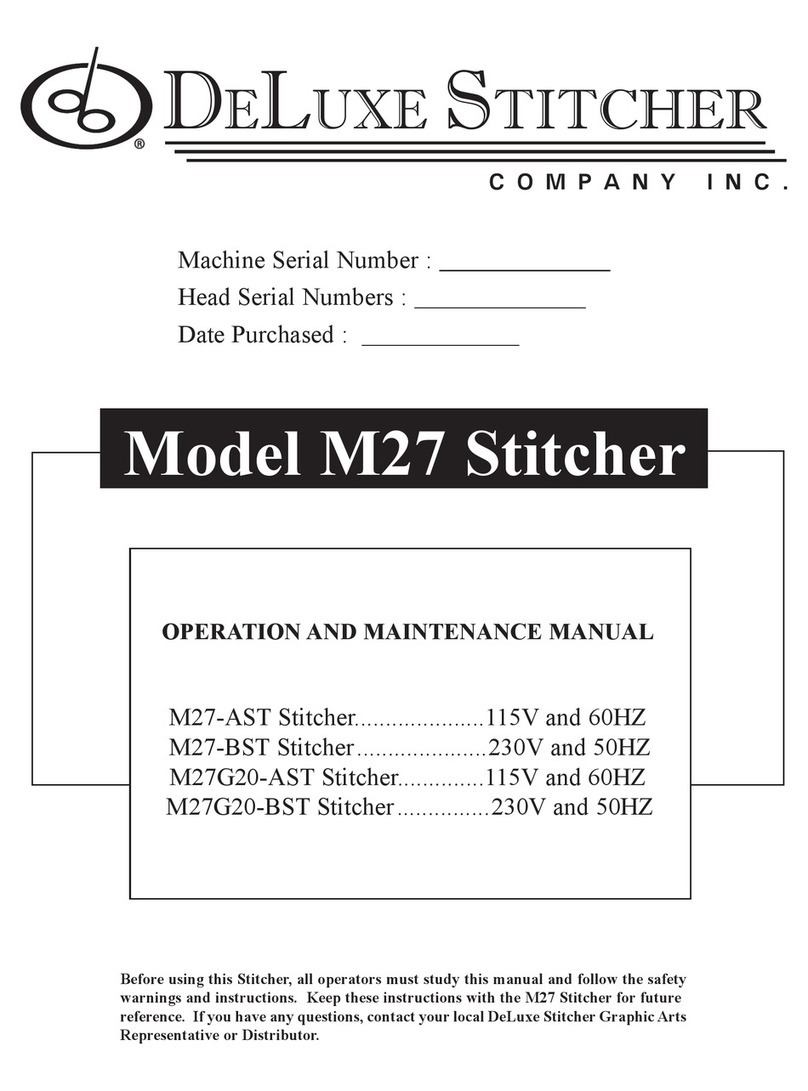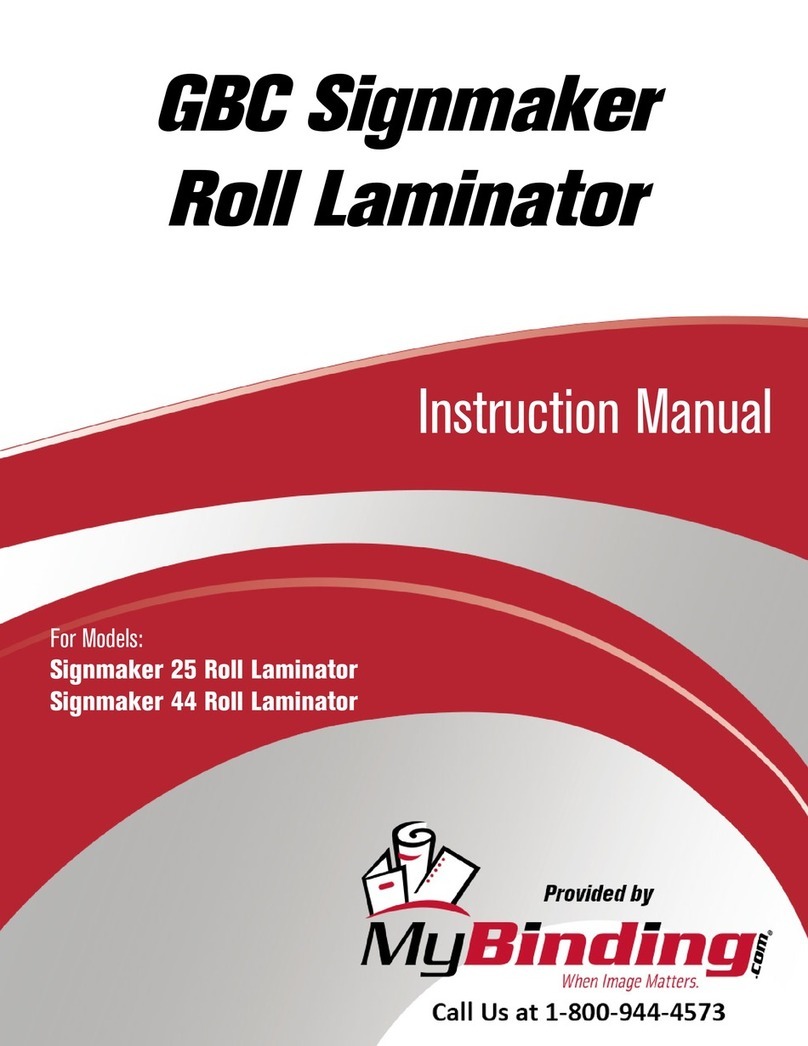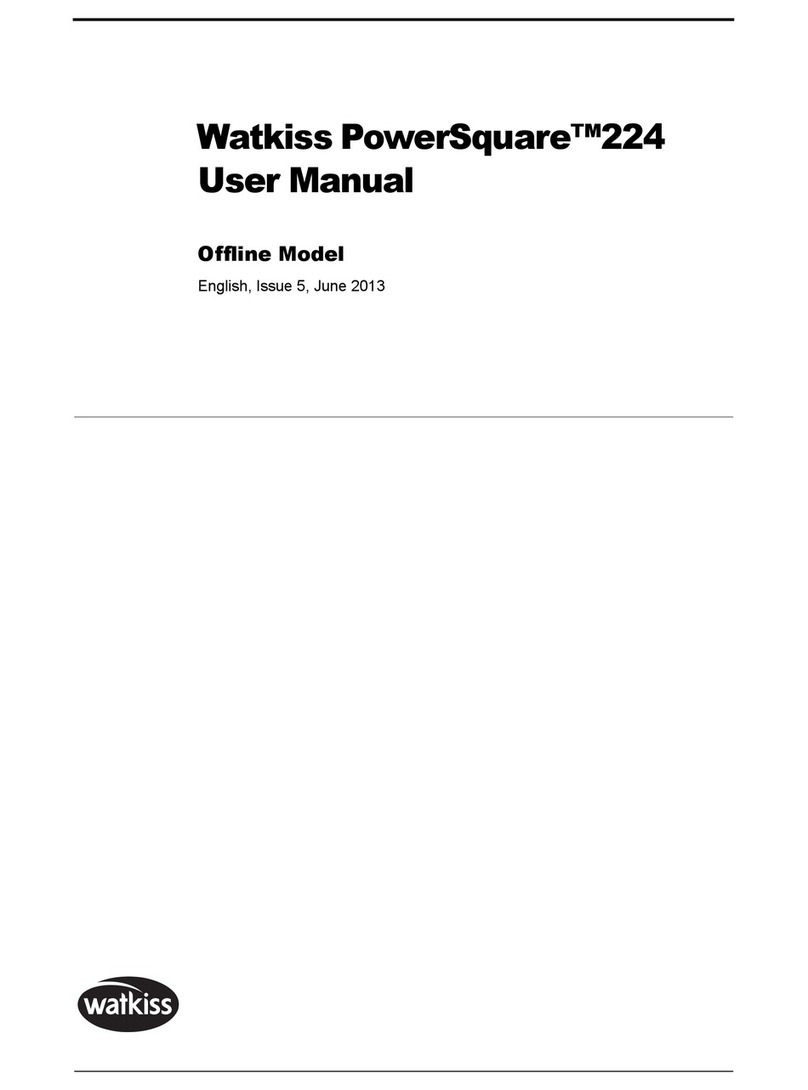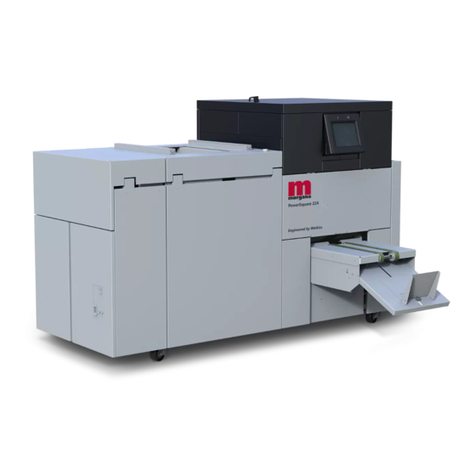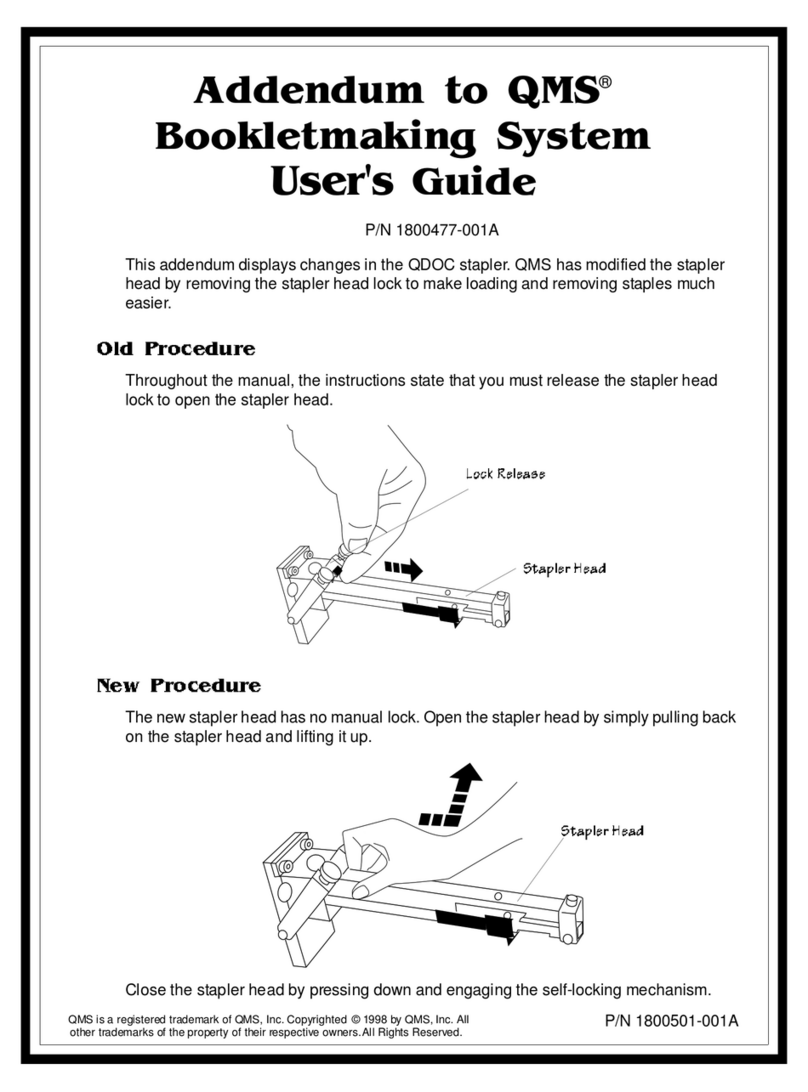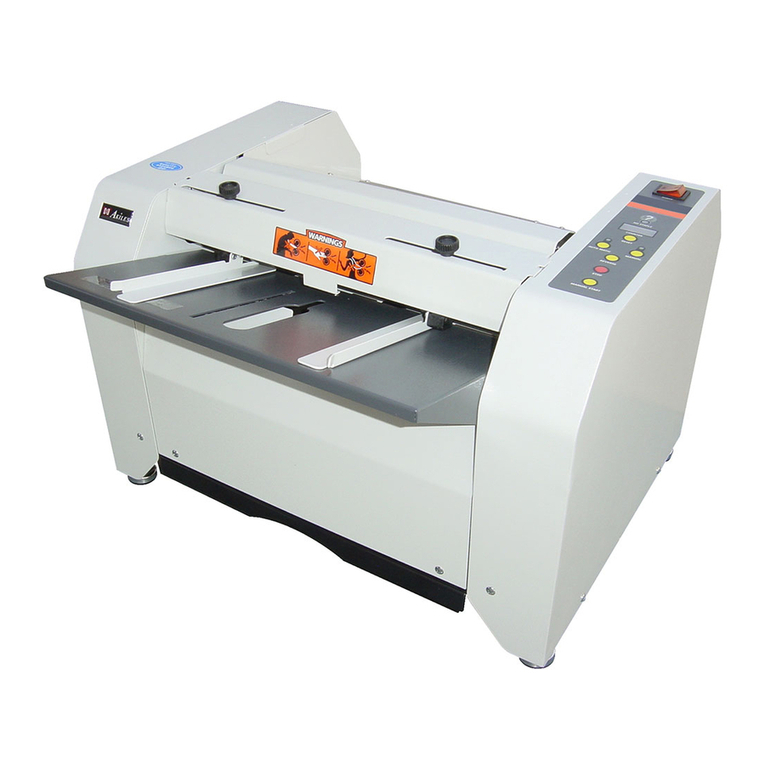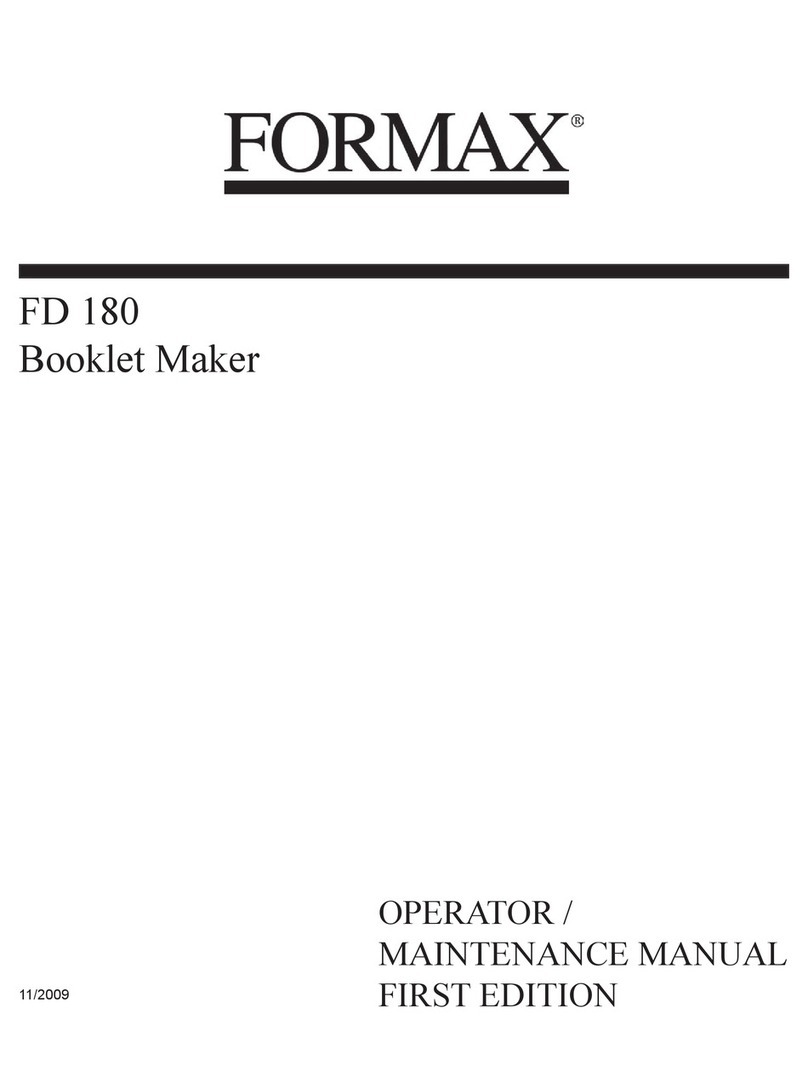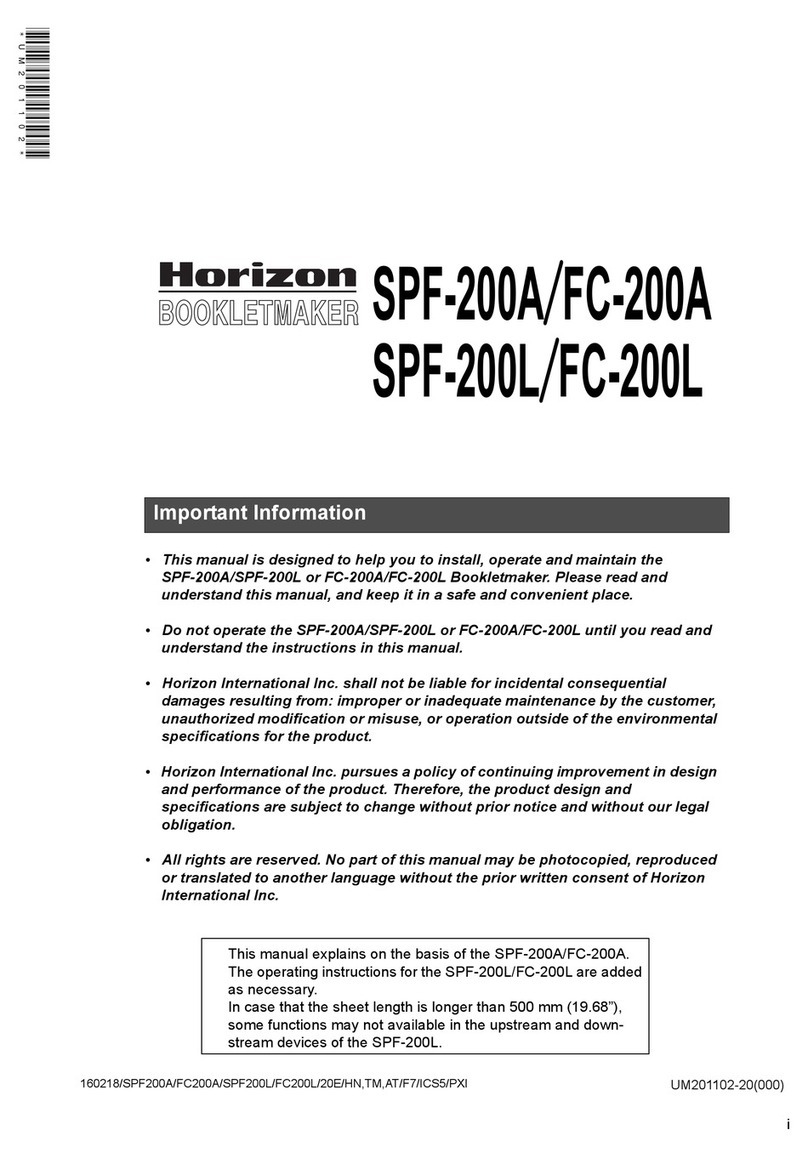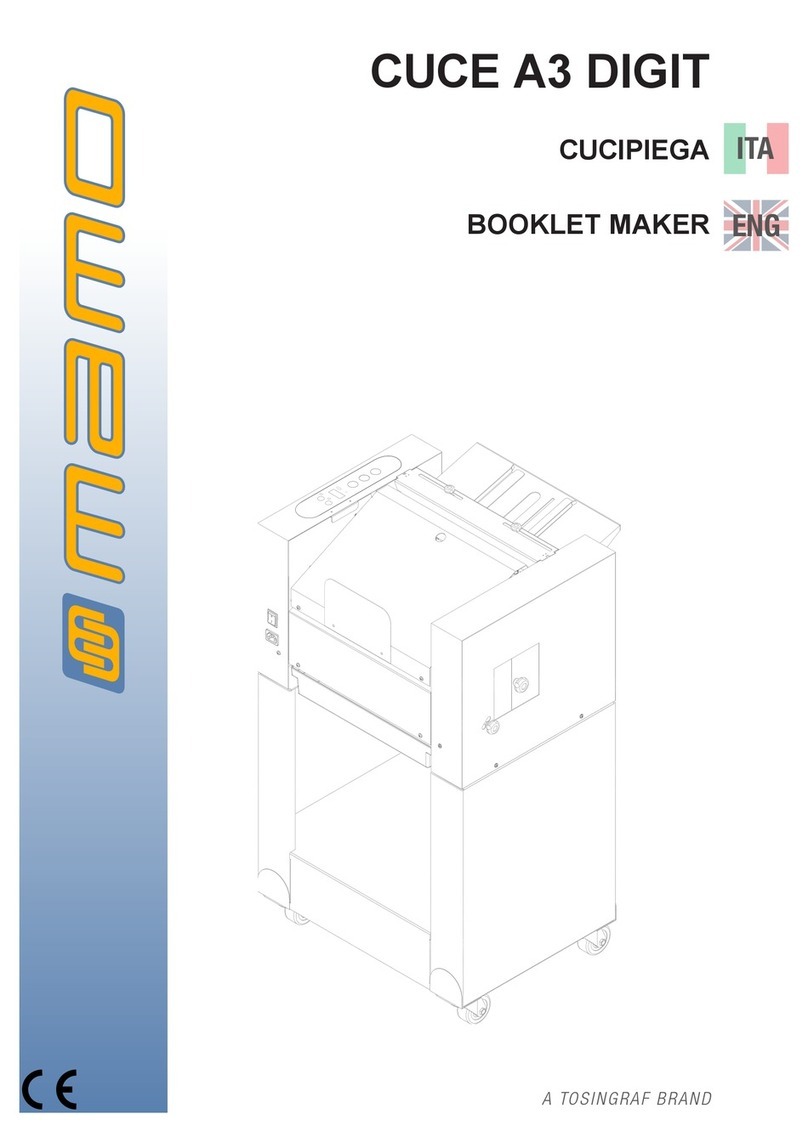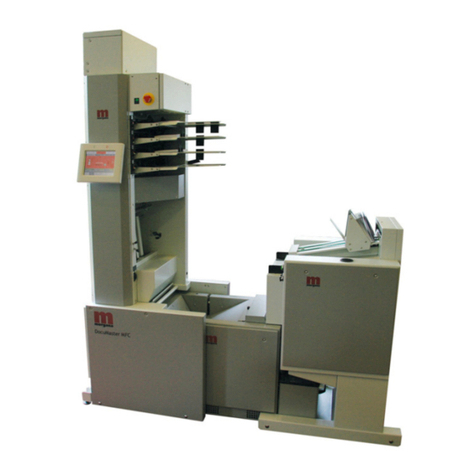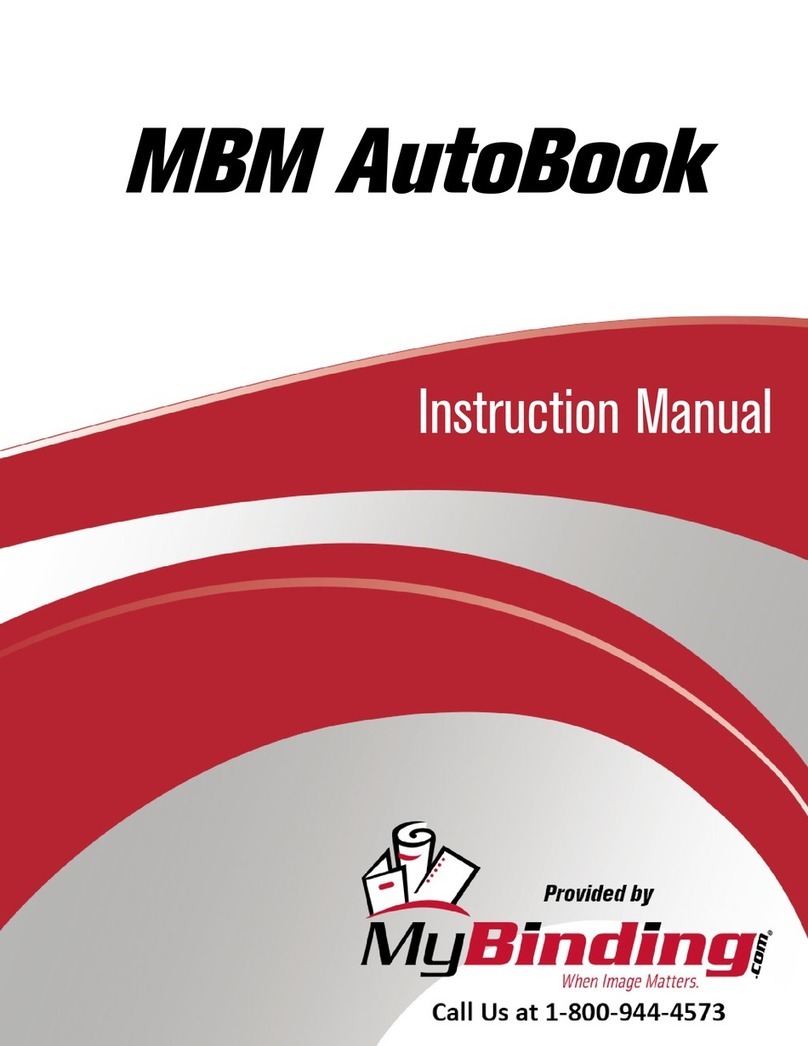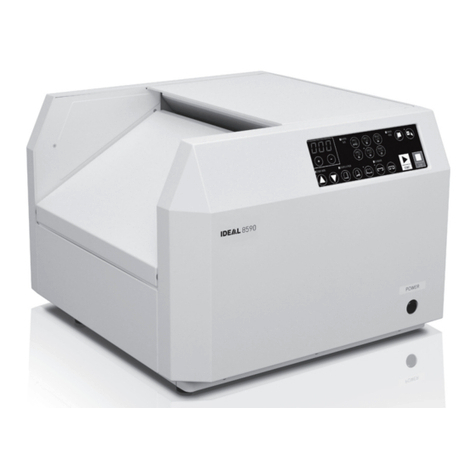
Watkiss SpineMaster Operator Guide - Issue 1 - June 2000 1
1 Introduction
Thank you for purchasing the Watkiss SpineMasterTM.
The Watkiss SpineMasterTM post-processes stitched or
stapled booklets to give them the professional flat ap-
pearance of a perfect bound book, but with the security
of a stitched spine. The resulting SquareBackTM booklets
are flat, making them easy to stack, handle and pack.
If you use your SpineMaster to supply SquareBack book-
lets to your customers, remember to tell them to specify
‘SquareBack booklets’.
INSTALLATION It is recommended that your SpineMaster should be
located on a level floor.
Caution This machine must only be plugged into an electrical
supply line of the correct voltage and with a proven earth.
Anydamage causedby failureto doso willnot becovered
by the guarantee. The required machine voltage is shown
on the label on the rear of the unit.
The SpineMaster is castor-mounted so that it is easy to
position where required. Please note that the castors can
be locked if required.
SAFETY
INFORMATION
Your Watkiss SpineMaster has been designed with safety
as a key feature. However, to ensure it is used safely
please observe the following cautions and warnings:
Warnings • Do not allow hair or clothing to fall inside the Spine-
Master during operation.
• Do not attempt to put your hands or objects, other
than booklets, inside the SpineMaster during opera-
tion.
• As with all electrical equipment, disconnect the unit
from the mains electricity supply when replacing
fuses or when instructed to do so in this manual.
Cautions • Do not stand or sit on the top of the m/c. The quick
release top could be flipped off by your weight.
